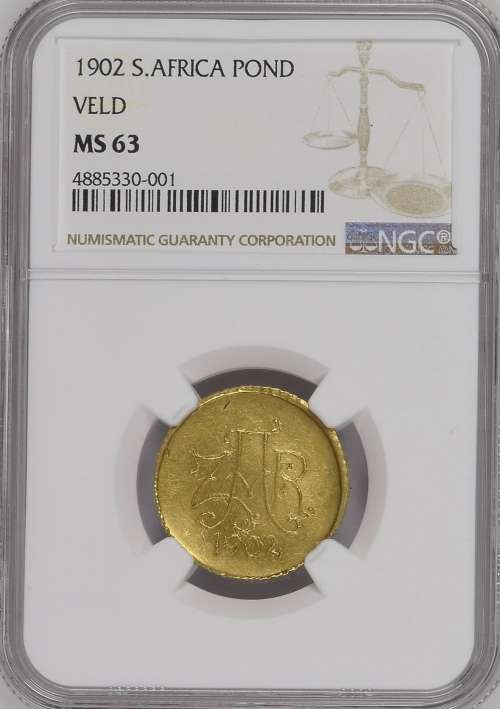







South Africa: Paul Kruger ZAR Gold Veldpond of 1902 MS 63 NGC | Mint State Boer War Emergency Pond
Check my rate
| Main centres: | 1-3 business days |
| Regional areas: | 3-4 business days |
| Remote areas: | 3-5 business days |








| Main centres: | 1-3 business days |
| Regional areas: | 3-4 business days |
| Remote areas: | 3-5 business days |
South Africa: Paul Kruger ZAR Gold Veldpond of 1902 MS 63 NGC
Mint State Boer War Emergency Pond
History has a way of repeating itself, and the need to pay troops at war while lacking an adequate supply of familiar money brought to the numismatic world another classic among the siege coinages of the world. This emergency "pond," equal in size and approximately equivalent in intrinsic value to the normal ponde, was struck during the siege of Pilgrim's Rest near the end of the Boer War in South Africa. The peace treaty signed at Pretoria on 31 May 1902 annexed the republics of the Transvaal and the Orange Free State to the British empire. This was the last thing the Boers wanted to happen, and they continued to engage in bloody warfare almost to the very end. Early in the year 1902, the Dutch commanders found themselves in dire need of cash to pay their troops and also for purchasing needed supplies. Lacking coined money but having a supply of native gold, they set up a field mint. Accounts of the actual "mint" vary a bit, one suggesting that crude machinery was set up literally on the veldt, or long grass, while another relates that a long-disused workshop of the Transvaal Gold Mining Estates was employed. It may be that blanks were made in one locale, while the final pieces were coined in the other. It is known that the coins were requested by a commanding general of the Boer troops, that the acting president of the republic approved their creation, and that a Mr P.J. Kloppers, formerly a school teacher, was employed to create the dies on the spot for coins that would be acceptable to the troops. His finished design was simple enough, yet it said it all -- giving the initials "ZAR" for the republic with the date below, and on the opposing side a readily understandable mark of value. Pure 24-kt gold was melted and poured into blanks, then coined into money using a hand-turned lathe. A single pair of dies was engraved, the obverse die becoming nicked, giving rise to the famous "slash" variety. It is believed that 986 pieces in all were produced. Most today are found to have been used, or are impaired, which is certainly a reasonable expectation for coins paid to troops in such a situation. Only a handful seem to have survived the war and their age in such condition as is seen on this excellent uncirculated "siege pond" -- a historic coin if ever there was one.



